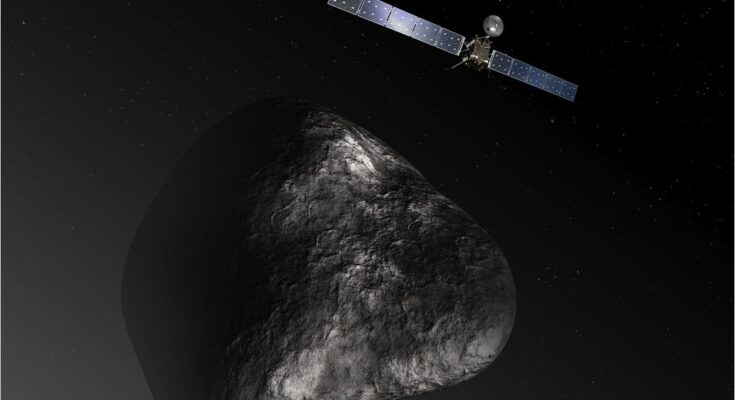A recent study suggests that up to 60 percent of near-Earth objects might be dark comets. These are special types of asteroids that act like comets and may have water ice. Most of them come from the area between Mars and Jupiter.
In 2023, researchers, led by Darryl Seligman from Cornell University, discovered the first dark comets. They found six of these unusual objects by studying their strange movements.
Asteroids move in paths controlled by the sun’s gravity. However, the six objects found by Seligman’s team exhibit an unusual acceleration in their orbits that gravity alone can’t explain. This kind of motion is common in comets.
When comets heat up, their ice turns into gas, creating a push that changes their speed and path. This process also forms a comet’s tail and the fuzzy cloud around its head, called the coma, according to Space.com.
The six objects identified by Seligman’s team don’t have an apparent coma or tail. They also don’t exhibit any visible outgassing. Despite this, their unusual acceleration suggests there must be some outgassing, likely from the sublimation of ice beneath their surface. This characteristic earned them the name “dark comets.”
Tracing origin of “dark comets” using computer simulations
New research led by Aster Taylor from the University of Michigan, including Seligman, has pinpointed the origin of dark comets. Using computer simulations, Taylor’s team traced their paths.
They found that dark comets can reach near-Earth orbits if they begin in the inner asteroid belt. However, one object, named 2003 RM, might be different. It could have been a Jupiter-family comet, traveling as far as the Gas Giant before returning toward Earth.
EARTH'S WATER MAY BE ESSENTIAL TO DARK COMETS- STUDY
Up to 60% of near-Earth objects, according to a University of Michigan research, may be black comets—mysterious asteroids that contain ice and may have contributed to Earth's water.
These comets and asteroids have… pic.twitter.com/ucCEywhgbM
— DailyNoah.com (@DailyNoahNews) July 11, 2024
These discoveries back up a theory from the 1980s about hidden water ice in the asteroid belt. NASA’s Dawn mission found ice on the dwarf planet Ceres and detected signs of ice on the asteroid Vesta, both in the main asteroid belt.
Ceres and Vesta, however, are much larger than most asteroids. They are believed to be leftover pieces of protoplanets that never fully formed into planets at the start of the solar system.
Dark comets and active asteroids could be a source of Earth’s water
The new findings are backed by earlier observations of objects that share features of both comets and asteroids. “Active asteroids,” for example, are found in the asteroid belt but show comet-like behavior, including visible outgassing and small tails. It’s unclear if they are icy asteroids or trapped comets from the outer solar system.
Scientists are still debating the link between active asteroids and dark comets. Taylor thinks dark comets and possibly active asteroids, could be where Earth’s water came from.
“We don’t know if these dark comets delivered water to Earth,” Taylor said in a statement. “We can’t say that, but we can say that there is still a debate over how exactly the Earth’s water got here. The work we’ve done has shown that this is another pathway to get ice from somewhere in the rest of the solar system to the Earth’s environment.”



